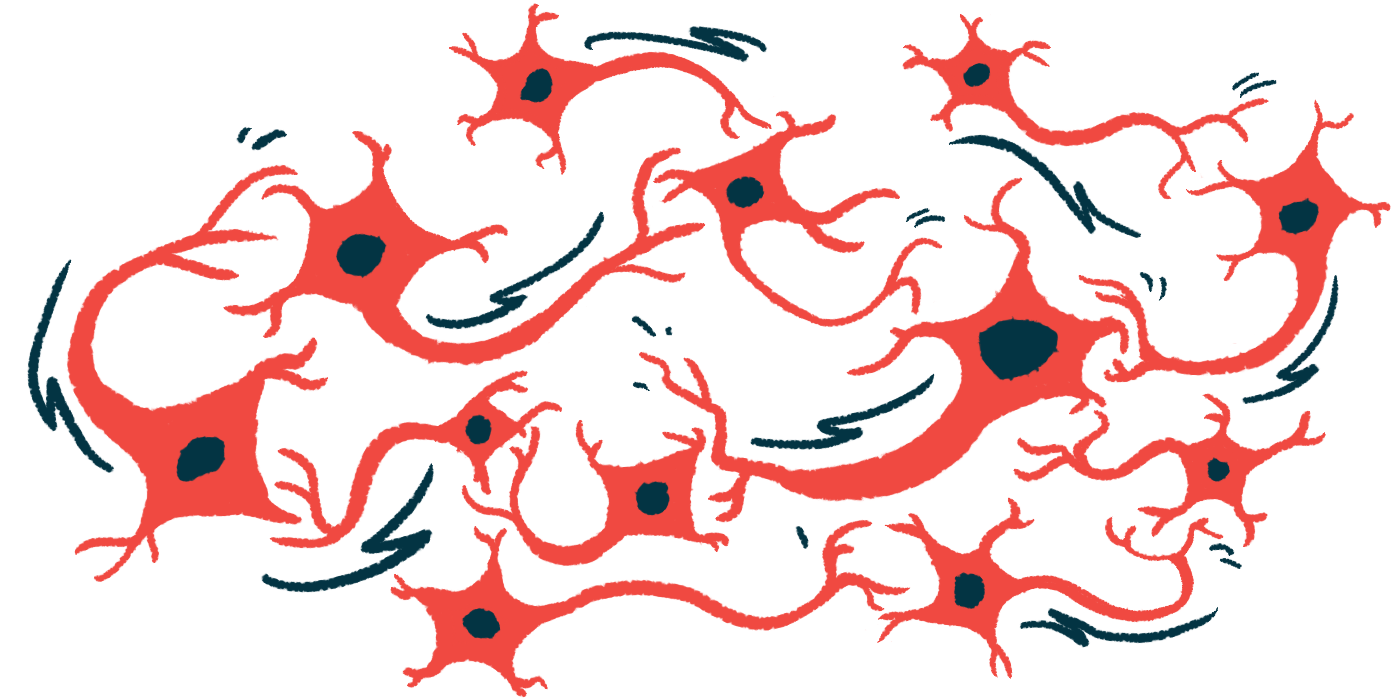In SMA, Spinraza boosts signals in nerves that supply muscles
Researchers tested 10 adults' motor function, electrophysiological performance
Written by |

Motor improvements in adults with spinal muscular atrophy (SMA) treated with Spinraza (nusinersen) paralleled a boost in the strength and duration of electrical impulses along nerves that supply the muscles, a study shows.
In an SMA mouse model, Spinraza restored dormant motor neurons, the nerve cells that aid voluntary movement lost with the condition, and increased the connections between nerves and muscles.
Future studies with “extended observation periods will be valuable for further elucidating [Spinraza’s] long-term trajectory and individual variations in therapeutic response,” the researchers wrote in the study, “Mechanisms of functional improvement behind nusinersen treatment in adult spinal muscular atrophy,” which was published in Experimental Neurology.
In SMA, SMN1 gene mutations lead to a deficiency in the SMN protein, disrupting the function of motor neurons, particularly those that extend from the spinal cord to the muscles they control. This results in muscle wasting and weakness, but disease severity is generally dictated by the number of copies of a second SMN2 gene, which produces a small amount of SMN that can partially compensate for the loss of SMN1.
Spinraza is a disease-modifying therapy approved for children and adults with SMA that boosts the amount of SMN produced by the SMN2 gene. The therapy has improved motor function in children, especially presymptomatic or early symptomatic children, and prevented neurological decline and enhanced motor function in adults.
Despite Spinraza’s well-established clinical benefits, the underlying mechanisms of these improvements aren’t fully understood.
“Understanding the mechanisms of functional improvement after [Spinraza] treatment in SMA can provide knowledge for optimization of therapy and contribute insight for other neurodegenerative diseases,” wrote researchers in Taiwan who evaluated the motor function and electrophysiological performance of 10 SMA adults, ages 26-55, before and after Spinraza treatment. At the same time, they investigated the underlying therapeutic mechanisms behind such improvements in adult late-stage SMA mice. The study was partially sponsored by Biogen, which markets the therapy.
Gains with Spinraza treatment
All 10 patients improved overall and in upper limb motor function with Spinraza, as assessed by the Hammersmith Functional Motor Scale-Expanded (HFMSE) and the Revised Upper Limb Module (RULM). In particular, HFMSE scores showed a significant increasing trend over time, starting at a mean of 24.3 points before Spinraza and rising to 26.8 after two months, 27.9 at six months, and 28.2 after 10 months of treatment. Mean RULM scores also significantly improved for the dominant and non-dominant upper limbs.
In three patients who could walk without support, the distance walked in six minutes grew from a mean of 147 to 198 meters (482 to 650 feet) over the 10 months.
Patients underwent nerve conduction studies to measure the electrical signals that travel along the nerves that supply, or innervate, the muscles in the arms and legs.
After 10 months, the strength and duration of the electrical signals in the ulnar nerve that supplies the arm significantly improved, as indicated by a significant sustained rise in compound muscle action potential (CMAP), the summation of electrical signals in multiple muscle fibers. Improvements were also observed in motor unit number estimation (MUNE), which measures the number of motor units, or a single motor neuron and all the muscle fibers it innervates.
No significant changes were seen in CMAP strength or MUNE for the peroneal nerve that supplies the leg. The CMAP duration did significantly increase over time in this nerve, however.
Improvements in mice
An analysis of brain and spinal cord tissue of SMA mice that received Spinraza via an injection into the brain showed signs of a dose-dependent boost in SMN2 gene activity, which increased SMN protein production by up to nine times.
As in people, the mice’s motor function improved with Spinraza, as indicated by a Rotarod test, which involves placing mice on a rotating rod and measuring their ability to stay on it. Treated mice performed similarly to healthy mice and significantly better than untreated mice.
In nerve conduction studies, the strength of the CMAP didn’t change in treated or untreated mice. In comparison, the CMAP duration showed a trend toward improvement in treated mice and the MUNE significantly increased, indicating the reactivation of quiescent (dormant) motor neurons, the researchers said.
An examination of lower spinal cord tissue showed Spinraza partially prevented the degeneration of motor neurons. Still, it didn’t increase their numbers, “suggesting that nusinersen preserved functionally connected motor neurons without increasing overall motor neuron survival.”
Spinraza also restored the nerve supply and function to the muscle, as indicated by an improvement in the re-innervation of the neuromuscular junction, the place where nerves connect to the muscles they control. Consistent with these findings, treatment boosted the levels of agrin, a protein that’s important in the function of the neuromuscular junction.
“[Spinraza]-treated patients with SMA showed improved motor function with an increase in the amplitudes of MUNE and CMAP,” the researchers wrote. “After nusinersen treatment, some live, but functionless motor neurons became functional, while some denervated [neuromuscular junction] underwent reinnervation.”







